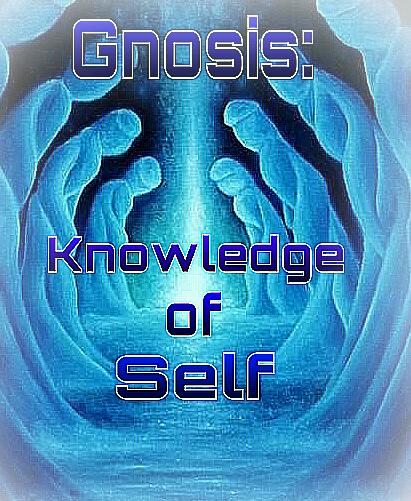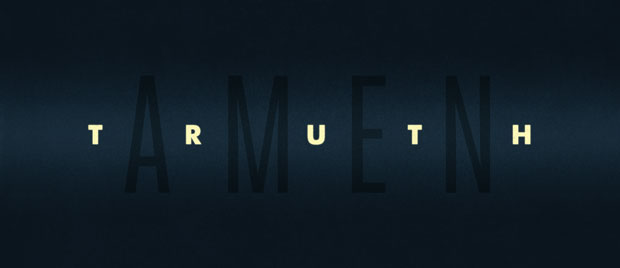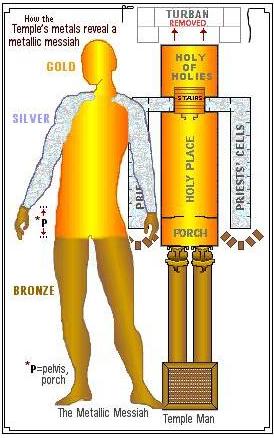by Moe | Feb 1, 2016 | Meaning of Words
Many people are under the false assumption that this planet called Nibiru, made famous by  Zecharia Stichin in his book “Twelfth Planet”, is some newly discovered unknown planet, when in fact it is simply not. The planet that Stichin and others call Nibiru has actually been known for thousands of years as the planet Jupiter.
Zecharia Stichin in his book “Twelfth Planet”, is some newly discovered unknown planet, when in fact it is simply not. The planet that Stichin and others call Nibiru has actually been known for thousands of years as the planet Jupiter.
We get the word Neberu (Nibiru) from the Summerians who were describing the planet Jupiter as it passes continually backwards and forwards near the ecliptic like a “ferry-boat.” There have also been many scholars who have verified these facts, such as Michael S. Heiser in his paper- “The Myth of a Sumerian 12th Planet”, and at the end of this article, I have also provided links to my research that can be used to verify the truth for yourself.
Nibiru (Neberu ) simply means “ferry, ferryman, or ford,” (mikis nibiri is the toll one has to pay for crossing the river) and is another title for Jupiter as it changes its position and crosses the sky. (more…)
Moe is the founder of GnosticWarrior.com. He is a father, husband, author, martial arts black belt, and an expert in Gnosticism, the occult, and esotericism.
by Moe | Oct 31, 2015 | Meaning of Symbols, Meaning of Words
Enveloped in darkness, we find the spirit of man is the candle of the Lord, which is our soul in the darkness and represented in the symbolism and  myths of the Jack-o-lantern. This Gnostic story of a lost spirit is represented in Jack who roams about the dark countryside of Hades on All Hallow’s Eve (October 31) with his illuminated candle, in search is his soul that is located somewhere between heaven and hell. His pumpkin represents the as without darkness of his body, that inside holds the light of his spirit as within.
myths of the Jack-o-lantern. This Gnostic story of a lost spirit is represented in Jack who roams about the dark countryside of Hades on All Hallow’s Eve (October 31) with his illuminated candle, in search is his soul that is located somewhere between heaven and hell. His pumpkin represents the as without darkness of his body, that inside holds the light of his spirit as within.
This time of year is known as Samhain, and it was said to be a time when evil spirits were said to have roamed about the countryside. The stories and actual use of carved pumpkins known as the Jack-o-Lantern, originate from the ancient Druids celebration of the festival of Samhain where they would light their sacred fires to the god of the forest on the advent of November. This was the great autumn festival that the Druids celebrated in thanksgiving for their harvest. Hence, this was their Thanksgiving. (more…)
Moe is the founder of GnosticWarrior.com. He is a father, husband, author, martial arts black belt, and an expert in Gnosticism, the occult, and esotericism.
by Moe | Oct 28, 2015 | Meaning of Words
The meaning of the Greek word ‘Gnosis’ (in the nominative case γνῶσις f.) is “knowledge of spiritual mysteries”, which is  derived from the Ancient Greek ‘упчгли’ – “to know or understand.” The adjective of this word is “Gnostikos”, and is “cognitive or intellectual.”
derived from the Ancient Greek ‘упчгли’ – “to know or understand.” The adjective of this word is “Gnostikos”, and is “cognitive or intellectual.”
The Old Latin word, ‘GNOsoo’ is where we get the modern Latin word ‘novi,’ which is a noun that means “actual knowledge that is the result of past learning”, and ‘noscos’ which is the present use of the verb ‘novi’; it denotes “to learn.”(1)
The Hebrew word “knowledge” (דעת da`ath) in the Septuagint, thus:
Proverbs 2.6 — The Lord gives wisdom (sophia), from his face come knowledge (gnosis) and understanding (sunesis)”
Ovid, the Roman-Greco poet who lived at the time of Augustus, had explained approximatelyt 2,000 years ago; “Gnosus or Gnossus was the chief city of ancient Crete, and from this word are formed the adjectives ‘ Gnosius’ and ‘Gnosiacus,’ (which are used as equivalent to the more general epithets ‘Cressius,’ ‘Cretaeus,’ ‘Creticus,’ ‘ Cretensis,’)
And likewise the feminine Graeco-poetic forms ‘ Gnosis’ and ‘ Gnosias,’ which are frequently placed absolutely, like ‘ Cressa,’ for Ariadne, ‘ puella’ being understood as in the line before us, and below
The towns next in importance to Gnosus were ‘ Gortys’ or ‘ Gortyna,’ and ‘ Cydonia,’ and hence the adjectives ‘Gortynius’ and ‘ Cydonius’ are equivalent to Cretan, as when Virgil names ‘stabula Gortynia’ and ‘Cydonia spicula.’ ‘Cressa’ is used absolutely by Propertius to indicate Pasiphaethe wife of Minos, and by Ovid in one passage for Ariadne3, and in another for Aerope. (Ovid: Selections for the Use of Schools, with Introductions and Notes )
This etymology is also where we get the Old Latin word when a person is lacking Gnosis, which is ‘ignotis’ meaning ‘unknown.” From the word ignotus, we get the modern meaning in English, ‘ignorant’ which in Latin is, ‘ignarus.'(2)
In Old Norse, the root word of Gnosis is “knā (to know how); the Scots spell it, “knaw (to know, recognize), and the Icelandic kná (to know, know how to, be able). In Persian, it is ‘kun-da’ which means learned. In German, Gnosis is spelled “kun-de, for knowledge and kenn-t-niet, for science”. It is from these Old Norse, Persian and German words where we get the modern spelling of ‘kundalini.’ In Old Irish, it is “conn for reason, sense, intellect, prudence.” (1) From this word, we get the English word ‘can’ (to know how) and then ‘cunning,’ meaning, “clever, artful, crafty etc.”
All these various spellings from around the world basically have the same meaning as the Greek word that we know of as ‘Gnosis’, and from these old Greek, Latin, Persian, Norse and Scot words, we get the modern English spellings of the words “know, knowledge, knowledgeable, knowingly etc.”(3)
Plato The Statesman — Stranger
In this way, then, divide all science into two arts, calling the one practical (praktikos), and the other purely intellectual (gnostikos). Younger Socrates: Let us assume that all science is one and that these are its two forms.
SOURCES:
1. Outlines of Etymology By Samuel Stehman Haldemam
2. First steps in Latin By R.F. Leighton
3. A dictionary of etymology of the English language: and of English synonyms … By John Oswald
RESEARCH:
The initial NO- is strictly the English kNO-w, so that normal has something to do with knowledge. But it has lost initial g- (gay in get,) present in the Greek GNOrizdo’ (I make known,) to search into, to acquire the knowledge of; GI-GNO’sko, to know, to learn; early Latin GNOsoo, afterwards NOsco to know, get knowledge of; Greek GNOmon a rule, square, Ac., also (German kenn-ung) the tooth by which a horse’s age is made kno-wn; Persian kun-da learned, wiso; German kun-de knowledge; kenn-t-niet science; kun-st art, Ac Irish conn reason, sense, intellect, prudence; Welsh cein-ad circumspection. English kno-w, ken, can, eouthe (affable, kind), cunning (formerly in a good sense), cann-y (cautious, Ac), and by dropping the initial—no-ble, no-table; but as this no- was originally gno-, and as n of the prefix in(not) was lost, the negative form of no-ble became i-gno-ble. – Outlines of Etymology By Samuel Stehman Haldeman
Know—Nosco, Scio, Gnorus for Gnarus, Logos, Historia, Sophia, Gnomon, Sagax, Sapio, Lego. See Understand, Wise. From L. notus, nosco, to know.
Knowledgeable—learning, erudition, letters, science ; wisdom, skill ; acquaintance, notice ; information ; of all things, omniscience. See Learning, Foresight. – A dictionary of etymology of the English language: and of English synonyms … By John Oswald
Moe is the founder of GnosticWarrior.com. He is a father, husband, author, martial arts black belt, and an expert in Gnosticism, the occult, and esotericism.
by Moe | Sep 16, 2015 | Meaning of Words
“The word ‘amen’ is from Ammon, the father god of Egypt, and was an ancient Egyptian salutation to the supreme power of the universe.” – Manly P. Hall
The ancient Greek name Ammon (Aum-en or Aum-on) later becomes “Amen” in the Abrahamic religions. The word Abraham is a deviation of Ham (Hebrew: חָם, Modern H̱am Tiberian Ḥām ; Greek Χαμ, Kham ; Arabic: حام, Ḥām), who the Egyptians were said to have called Ham; the father of Egypt who was the chief or first patriarch of Africa.
Ham is the Egyptian name for the planet Jupiter, who the Egyptians and Greeks held as the King of the Gods and Lord of the Universe. Before the ancient Greeks had conquered Egypt and had changed and/or merged their religions, symbols, custom, Gods and Goddess, they called Jupiter by the name of Zeus. After the Greeks had conquered Egypt, they would rename the Egyptian name Ham for Jupiter to the Greek Ammon (or Zeus-Ammon, Jupiter Ammon, Hamaun, or Hammon). Therefor, when the church Saints and Fathers state they are sons of Abraham, what they really mean is that they are sons of Egypt who have brought their Abrahamic religions with them from the East. (more…)
Moe is the founder of GnosticWarrior.com. He is a father, husband, author, martial arts black belt, and an expert in Gnosticism, the occult, and esotericism.
by Moe | Sep 7, 2015 | Meaning of Symbols, Meaning of Words, Mystical Christianity
In the Hebrew bible of the Old Testament and in the New Testament, the Holy of Holies (Kodesh Hakodashim) sits behind the two pillars and refers to the inner sanctuary of the Tabernacle where God was believed to be present. It is further described as an inner shrine housing the Ark of the Covenant guarded by two-winged golden cherubim, and an outer chamber (Holy Place) with a golden lampstand, table for showbread, and altar of incense.
the two pillars and refers to the inner sanctuary of the Tabernacle where God was believed to be present. It is further described as an inner shrine housing the Ark of the Covenant guarded by two-winged golden cherubim, and an outer chamber (Holy Place) with a golden lampstand, table for showbread, and altar of incense.
The meaning of tabernacle(Hebrew: מִשְׁכַּן, mishkan), is “a dwelling place or to take up temporary residence; especially: to inhabit a physical body.” This allegorical description above of the Holy of Holies as an inner shrine and a temporary residence to inhabit a physical body, tells us esoterically where this tabernacle is located.
It is not only a man-made building or structure, but also part of the human body, and that in science we can simply call the tabernacle our skull which holds the chalice for our brains, with the winged golden cherubim guarding our thoughts being our hippocampus or ammon’s horn; a subject I have written about many times.
This is the beginning explanation of the hidden esoteric meanings behind some of these gnostic biblical stories that were meant to teach initiates to know thyself and to reach a state of true gnosis. This wonderful gnostic story is further explained by Manly P. Hall who had written about this in the Initiates of the Flame: (more…)
Moe is the founder of GnosticWarrior.com. He is a father, husband, author, martial arts black belt, and an expert in Gnosticism, the occult, and esotericism.
by Moe | Aug 28, 2015 | Meaning of Words
Up the spine, the twisting serpents reach Golgatha, the place of the skull that holds the chalice of our brains. This is also  known as the kundalini that rises up our spine, and would scientifically represent our central nervous system as it coils up the spinal medulla like two twisting serpents. This is why people who explain the kundalini, normally say that it feels like an electric current running along the spine.
known as the kundalini that rises up our spine, and would scientifically represent our central nervous system as it coils up the spinal medulla like two twisting serpents. This is why people who explain the kundalini, normally say that it feels like an electric current running along the spine.
The explanation of the kundalini that I would like to give, is based on science. This way, we can properly ascertain the truth of what exactly is occurring in the human body when someone feels an electric current running up their spine, or “the coiled power”- a force which ordinarily rests at the base of the spine, described as being coiled there like a serpent by well-known spiritual teacher, translator Eknath Easwaran.
The kundalini, our central nervous system is the most important systems in our bodies. The kundalini is often described as a sleeping or dormant potential force that resides within us, and like the kundalini, the central nervous system is also called the control center of the body that has two main processing organs which are our brains and spinal cords.
Together with the peripheral nervous system, it controls everything we do. From our five senses; seeing, hearing, touching, tasting, and smelling and also our emotions, thoughts, and memory. (more…)
Moe is the founder of GnosticWarrior.com. He is a father, husband, author, martial arts black belt, and an expert in Gnosticism, the occult, and esotericism.
 Zecharia Stichin in his book “Twelfth Planet”, is some newly discovered unknown planet, when in fact it is simply not. The planet that Stichin and others call Nibiru has actually been known for thousands of years as the planet Jupiter.
Zecharia Stichin in his book “Twelfth Planet”, is some newly discovered unknown planet, when in fact it is simply not. The planet that Stichin and others call Nibiru has actually been known for thousands of years as the planet Jupiter.

 myths of the Jack-o-lantern. This Gnostic story of a lost spirit is represented in Jack who roams about the dark countryside of Hades on All Hallow’s Eve (October 31) with his illuminated candle, in search is his soul that is
myths of the Jack-o-lantern. This Gnostic story of a lost spirit is represented in Jack who roams about the dark countryside of Hades on All Hallow’s Eve (October 31) with his illuminated candle, in search is his soul that is 


